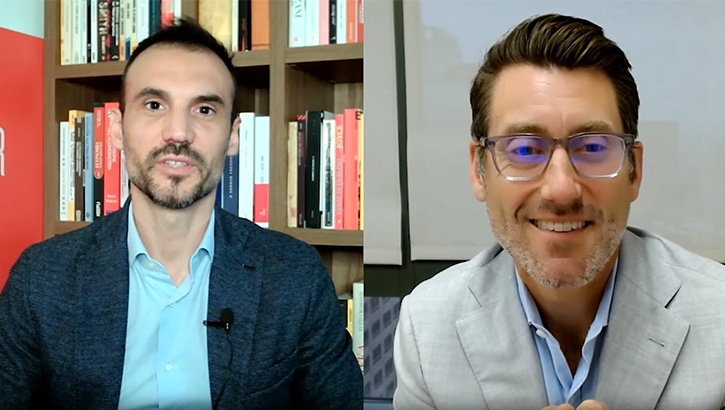Just as partisan bickering can stall legislators' effectiveness, so do investment absolutists have the potential to derail productive investment debate.
Morningstar's president of fund research, Don Phillips, has discussed this phenomenon in the realm of indexing versus active fund management, writing that extremists on either side of the debate routinely ignore legitimate data simply because it doesn't support their views.
Income and Total Return: Not as Different as You Think
Lately, I've seen signs of the same absolutism in the realm of another great investing debate: whether to manage a portfolio for income or total return. Even a hint of an endorsement for the total-return approach, as in this article, seems to set off the income absolutists.
This is frustrating because when you take the time to examine the two approaches, it's clear that they're not polar opposites at all. By getting bogged down in semantics, I fear that some investors might miss the big picture.
For starters, no one's saying income generation shouldn't be a key goal for every investor; it is, after all, one of two key components of the total-return equation. (The other, obviously, is price appreciation.) So when I recommend a total-return approach, I'm not saying to gorge yourself exclusively on securities with growth potential but no ability to "show investors the money." (We saw the downside of such strategies during the late 1990s, and it wasn't pretty.)
Income producers--whether bonds or dividend-paying stocks--should clearly be an important component of every investor's toolkit. They should also, arguably, grow in importance as a percentage of our portfolios as we age: Focusing on securities with the ability to pay income adds a valuable quality overlay to a portfolio, as income production can be an important show of an entity's financial wherewithal. From a practical standpoint, income can also provide a cushion on the downside when the market is falling.
Moreover, what would seem to be another big ideological fissure between the incomeniks and the totalniks--whether you tap your principal or not--is not as big a division as it might seem.
True, the goal for many income investors is to not touch principal but rather to fund expenses with the income that their portfolios generate. By contrast, total-return investors don't reflexively avoid tapping capital to fund living expenses; retired total-return investors might employ the kind of bucket approach that I discussed in my article Create a Pay Cheque in Retirement with a Total Return Approach.
But that doesn't mean that total-return investors favour blithely tapping capital until it's all gone. Rather, the goal of the total-return strategy is to grow the overall kitty by maintaining a diversified basket of investments--some income-producing, some that will contribute to the bottom line by appreciating in price, and some that do both. (It's not for nothing that Bill Gross called his big fund PIMCO Total Return, not PIMCO Income, and spawned scores of imitators.) When you get down to it, we're really discussing a difference in logistics--how you extract capital from your portfolio--more than a grand ideological divide. The big-picture goals of growing and maintaining a portfolio are the same for both income and total-return investors.
The Best of Both Worlds
In the end, I think the best answer for most investors is to give due consideration to securities' income-generating potential but within a total-return framework.
Blending the two approaches allows investors to benefit from the stability that income-producing securities bring to the table without sacrificing diversification or chasing securities that, in hindsight, turn out to be yield traps.
And employing a total-return approach has benefits not readily available to investors focused exclusively on income. A biggie is the ability to diversify across more security types than might naturally appeal to investors who are anchoring on securities' current income generation. High-quality bonds and cash provide an excellent case in point right now. It's hard to argue that their yields are attractive, and the prospect of higher interest rates looms large for longer-term bonds. But as the market sell-off in the second half of 2011 amply illustrated, such securities can provide valuable stability at a time when equities--including, yes, dividend-paying stocks--are cratering. The same goes for small-company and growth stocks. Although it's true that many of them don't pay dividends, they still can lend a performance-smoothing effect to a portfolio anchored in blue-chip dividend payers.
Embedding income producers into a total-return strategy has a couple of other key side benefits. One is tax management: Focusing on total return gives investors more control over when they harvest income from their portfolios and where it comes from--a particularly important consideration for investors with substantial assets in their taxable portfolios. A total return-oriented investor might wisely decide to hold income-producing securities in her tax-sheltered accounts, such as ISA wrappers, while steering non-dividend payers to the taxable account.
Another benefit of a strategy that combines income with total return is the ability to be strategic about which assets get tapped to meet income needs. A retiree might choose to fill up the income bucket using dividends or bond income, but he might also use the proceeds from rebalancing or from a tax-loss sale.
The bottom line? Resist the urge to classify yourself as either an income or total-return investor. When it comes to the health and stability of your portfolio, the best answer is "both."
A version of this article was originally published in January 2012.





























